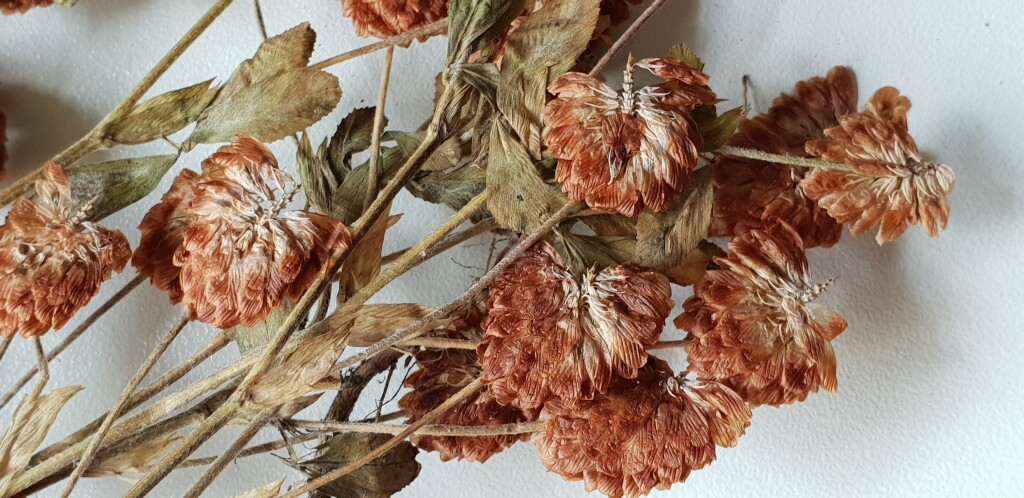Trifolium aureum
Pollich Golden CloverErect annual or biennial herb; stems 15–40 cm long, usually branching, moderately densely covered with numerous soft, appressed hairs. Leaves evenly trifoliolate, petiolate; leaflets narrowly obovate, rhombic to oblong-elliptic, 10–15 mm long, 3–6 mm wide, glabrous or nearly so, toothed in upper half, apex truncate or retuse; stipules leaf-like, narrowly ovate, adnate to petioles for about half their length. Inflorescence many-flowered, axillary, globose, 10–16 mm long and wide, pedunculate, the peduncles distinctly exceeding the subtending leaves; flowers subsessile. Calyx 2–3 mm long, white, glabrous, tube campanulate, 5-veined, throat open, teeth unequal, narrow, acute, erect in fruit, lower 3 teeth at least twice as long as tube, upper teeth subequal to tube; corolla 6–7 mm long, yellow, but darkening to reddish-brown soon after anthesis, persistent; standard spoon-shaped in fruit, hooded, prominently veined, margin minutely dentate. Pod obloid, c. 2 mm long, remaining enclosed in corolla; seed 1, flattened-ovoid, c. 1.5 mm long, yellow. Flowers mainly Jan. (1 record)
VAlp. Native to eastern and central Europe. Currently known by a single 2018 collection from alpine grassland on the Dargo High Plains, otherwise not known elsewhere in Australia.
Likely commoner than currently understood and overlooked due to its resemblance to the widespread Trifolium campestre from which it differs primarily in the relatively narrower leaflets that are equally petiolulate, a generally more robust habit and the long-pedunculate inflorescences.
 Spinning
Spinning
